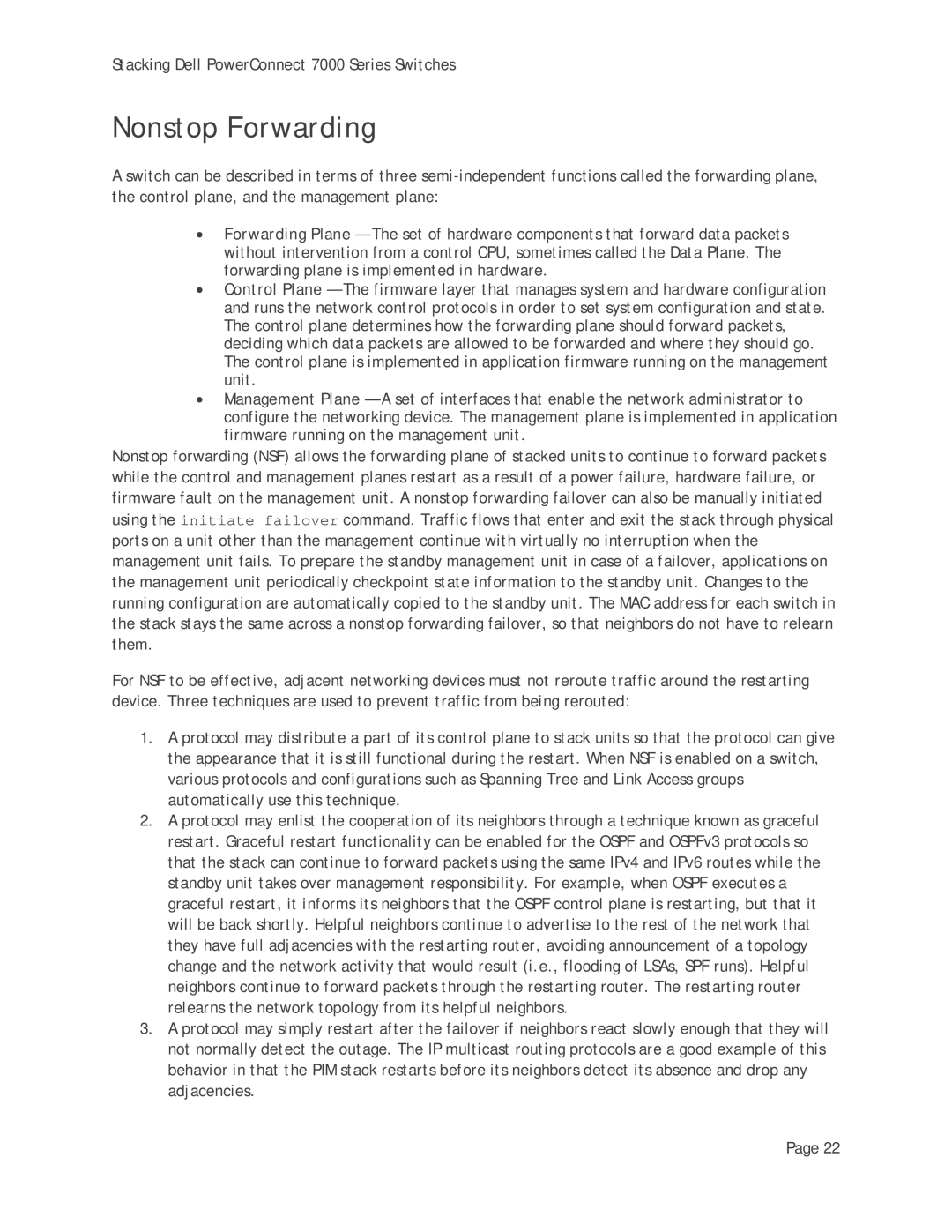Stacking Dell PowerConnect 7000 Series Switches
Nonstop Forwarding
A switch can be described in terms of three
•Forwarding Plane — The set of hardware components that forward data packets without intervention from a control CPU, sometimes called the Data Plane. The forwarding plane is implemented in hardware.
•Control Plane — The firmware layer that manages system and hardware configuration and runs the network control protocols in order to set system configuration and state. The control plane determines how the forwarding plane should forward packets, deciding which data packets are allowed to be forwarded and where they should go. The control plane is implemented in application firmware running on the management unit.
•Management Plane — A set of interfaces that enable the network administrator to configure the networking device. The management plane is implemented in application firmware running on the management unit.
Nonstop forwarding (NSF) allows the forwarding plane of stacked units to continue to forward packets while the control and management planes restart as a result of a power failure, hardware failure, or firmware fault on the management unit. A nonstop forwarding failover can also be manually initiated using the initiate failover command. Traffic flows that enter and exit the stack through physical ports on a unit other than the management continue with virtually no interruption when the management unit fails. To prepare the standby management unit in case of a failover, applications on the management unit periodically checkpoint state information to the standby unit. Changes to the running configuration are automatically copied to the standby unit. The MAC address for each switch in the stack stays the same across a nonstop forwarding failover, so that neighbors do not have to relearn them.
For NSF to be effective, adjacent networking devices must not reroute traffic around the restarting device. Three techniques are used to prevent traffic from being rerouted:
1.A protocol may distribute a part of its control plane to stack units so that the protocol can give the appearance that it is still functional during the restart. When NSF is enabled on a switch, various protocols and configurations such as Spanning Tree and Link Access groups automatically use this technique.
2.A protocol may enlist the cooperation of its neighbors through a technique known as graceful restart. Graceful restart functionality can be enabled for the OSPF and OSPFv3 protocols so that the stack can continue to forward packets using the same IPv4 and IPv6 routes while the standby unit takes over management responsibility. For example, when OSPF executes a graceful restart, it informs its neighbors that the OSPF control plane is restarting, but that it will be back shortly. Helpful neighbors continue to advertise to the rest of the network that they have full adjacencies with the restarting router, avoiding announcement of a topology change and the network activity that would result (i.e., flooding of LSAs, SPF runs). Helpful neighbors continue to forward packets through the restarting router. The restarting router relearns the network topology from its helpful neighbors.
3.A protocol may simply restart after the failover if neighbors react slowly enough that they will not normally detect the outage. The IP multicast routing protocols are a good example of this behavior in that the PIM stack restarts before its neighbors detect its absence and drop any adjacencies.
Page 22
